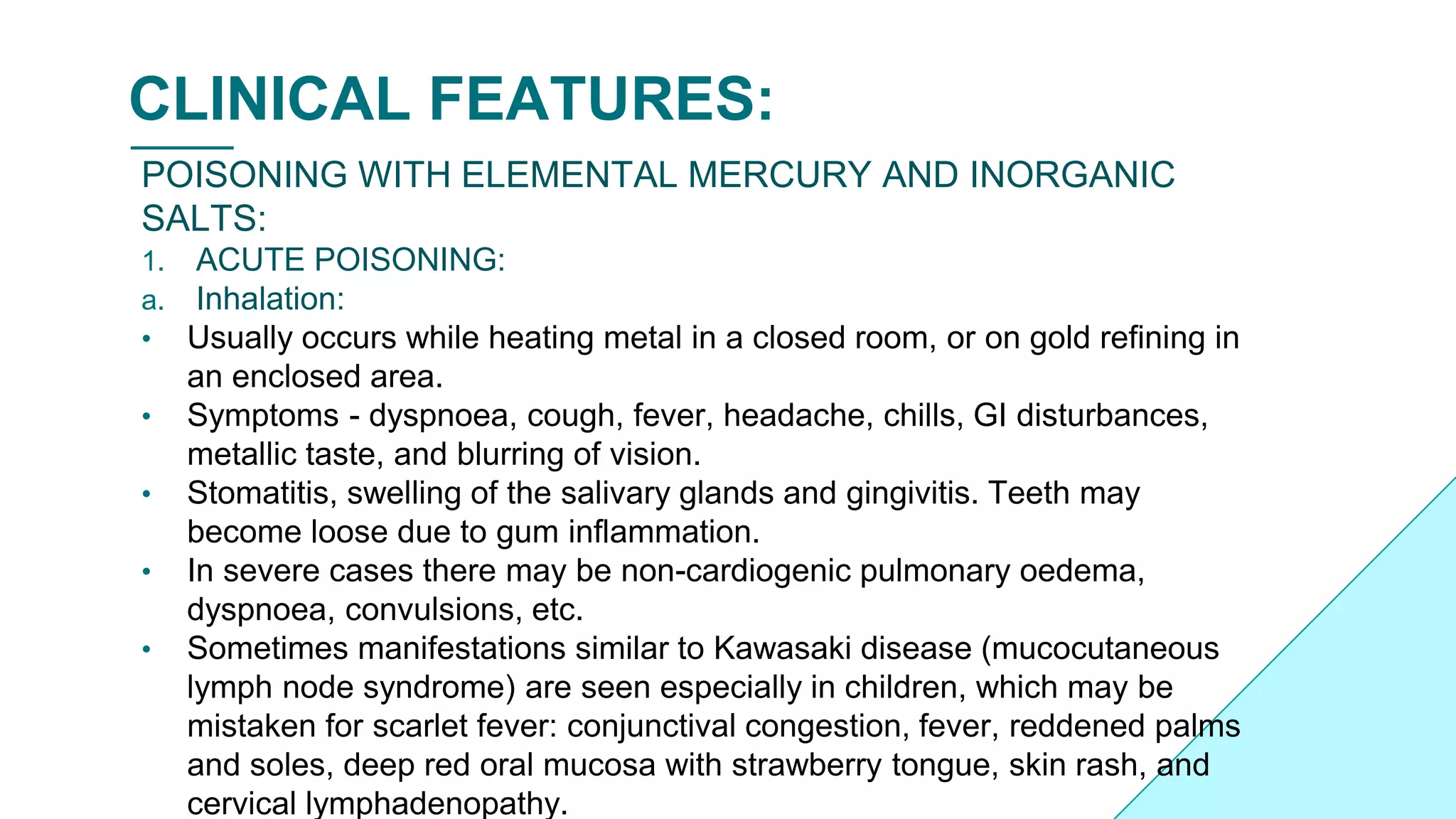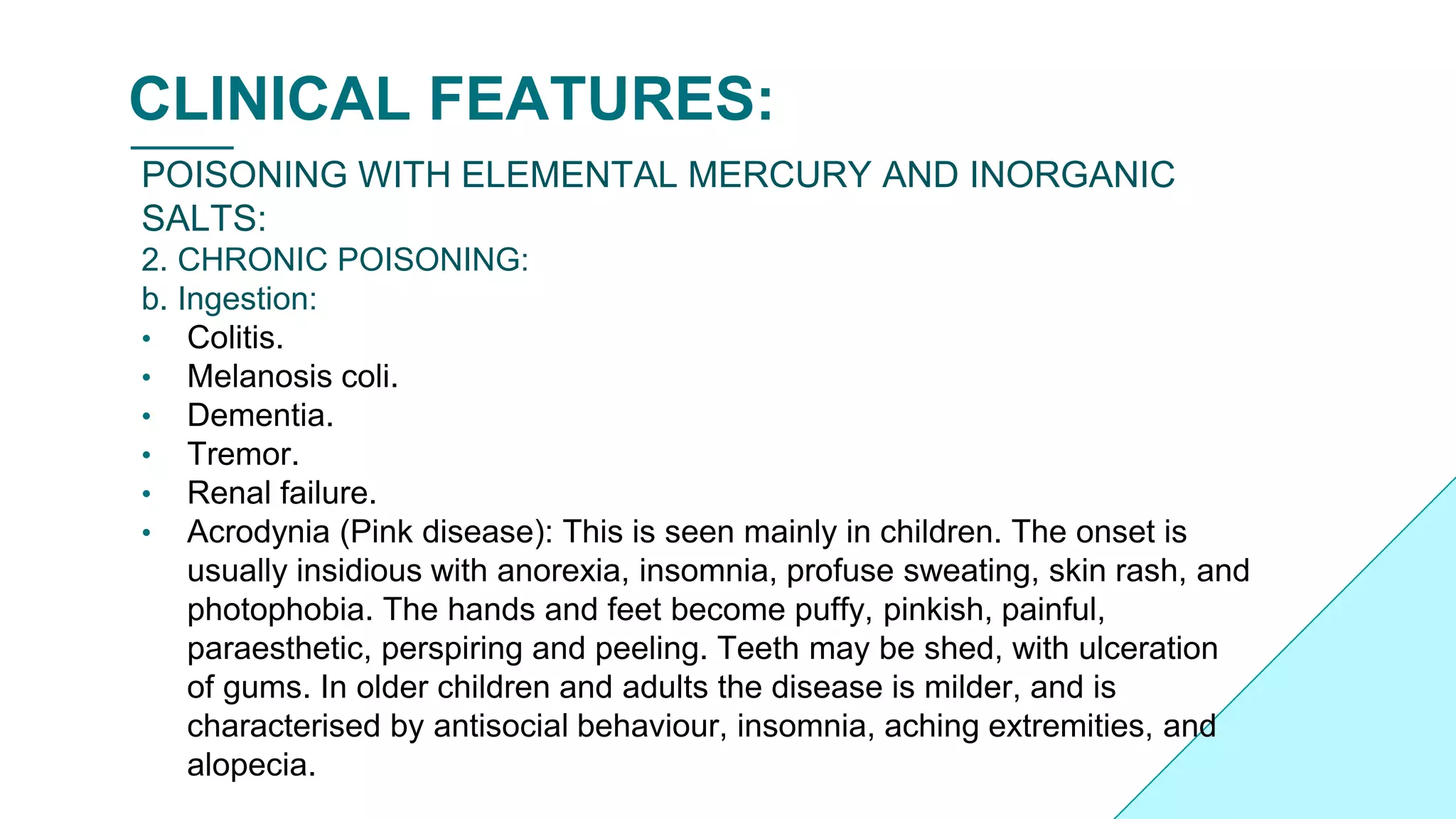This document provides information on mercury poisoning, including its physical appearance, types, uses, sources of contamination, toxic dose, clinical features of acute and chronic poisoning, diagnosis, and treatment. It describes two types of mercury - mercuric and mercurous. Clinical features of acute poisoning include tremors, gastrointestinal issues, and renal failure from inhalation, ingestion, or injection. Chronic poisoning can cause neurological and psychiatric symptoms as well as kidney damage. Diagnosis involves tests of urine, blood, hair and imaging. Treatment consists of chelation therapy, supportive measures, and removal of any injected mercury.


















